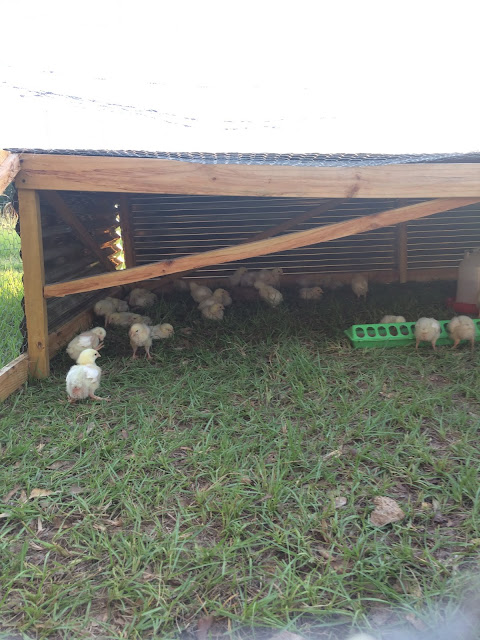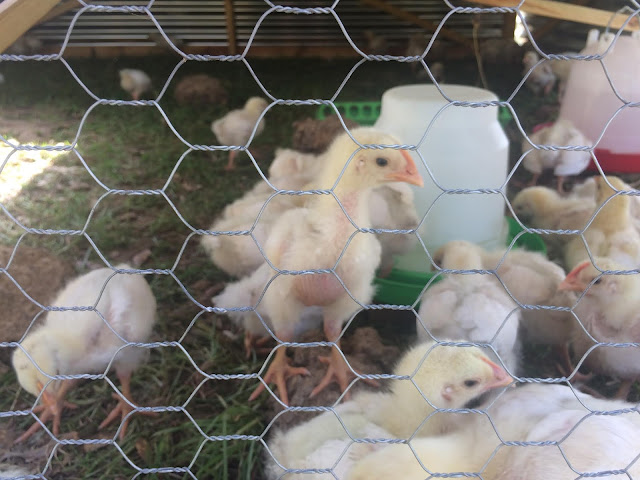To refresh your memory, chickens raised for eating are usually called broilers. Other terms like fryers or roasters are used interchangeably. This simply means they are suitable for broiling, frying or roasting. The breed of chicken is chosen for it's tenderness and ability to mature quickly. The average time from day old chick to harvesting is about eight weeks.
The first step was to build the cage. The book included instructions on how to build, and Son was able to assemble it in the back yard after buying the few necessary supplies.
The original plan made a cage 10'x12' to house 50-75 chicks. For the first effort we decided a smaller one would be more practical. So he built a 10'x10' cage for 40-60 chicks. The cage provided covered sections for shelter from sun and rain, open sections for light and ventilation, and a small hatch opening for access.
The Salatin model uses Cornish Rock Cross chickens, specifically bred to be fast growers and good meat (not for beauty, I might add). He ordered 55 male chicks from Murray McMurray Hatchery. He set up a small brooder in the garage, with deep litter and a warming light. But by the time the chicks arrived, the Texas summer heat had set in and he didn't need the light. In fact, the hot temperatures became a real problem and he ended up needing a fan at times to keep the chicks from getting too hot.
The chicks were moved outside at 12 days, the earliest possible age, in order to give them some relief from the hot, stuffy garage. But outside proved to be almost as hot, with temperatures for many days in July above 100 degrees.
Ideally the cage is moved once a day to a new grassy area, where the cows have recently grazed. The little chicks love the bugs that love cow poop and are often seen standing on top of a dry pile playing "King of the Mountain." The first few weeks were a challenge because several chicks would escape during the moving process and would have to be caught and put back inside.
The chicks were monitored closely to make sure they had access to plenty of clean water and the age appropriate feed.
Look for the second post about the rest of the process.



















No comments:
Post a Comment